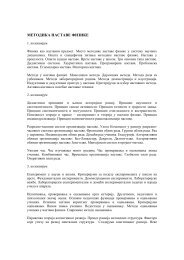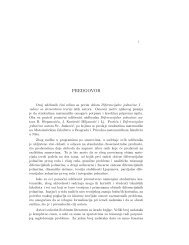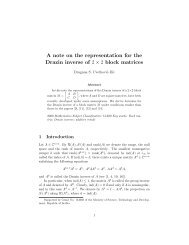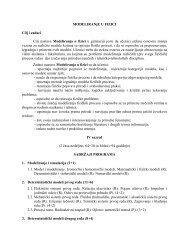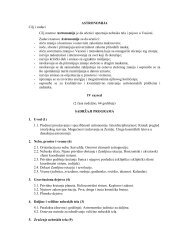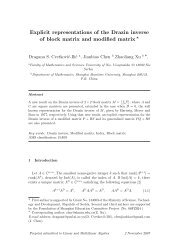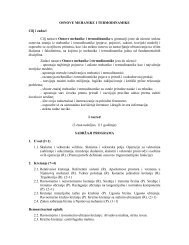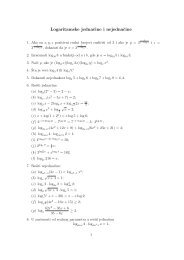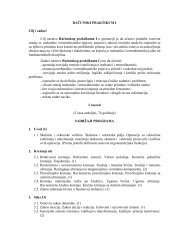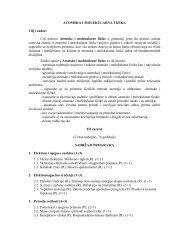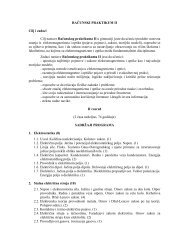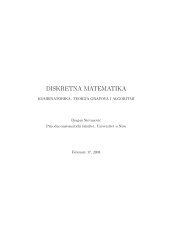The Hankel Transform of the Sum of Consecutive Generalized ...
The Hankel Transform of the Sum of Consecutive Generalized ...
The Hankel Transform of the Sum of Consecutive Generalized ...
Create successful ePaper yourself
Turn your PDF publications into a flip-book with our unique Google optimized e-Paper software.
3is given by−n)/2h n =L(n2 2 n+1√ L 2 + 4·{( √ L 2 + 4 + L)( √ L 2 + 4 + L + 2) n + ( √ L 2 + 4 − L)(L + 2 − √ }L 2 + 4) n .(6)From now till <strong>the</strong> end, let us denote byNow, we can writeξ = √ L 2 + 4, t 1 = L + 2 + ξ, t 2 = L + 2 − ξ. (7)h n = Ln(n−1)/22 n+1 ξ· ((ξ + L)t n 1 + (ξ − L)t n 2) . (8)Or, introducingϕ n = t n 1 + t n 2, ψ n = t n 1 − t n 2 (n ∈ N 0 ), (9)<strong>the</strong> final statement can be expressed byh n = Ln(n−1)/22 n+1 ξ· (Lψ n + ξϕ n ) . (10)Lemma 1.1. <strong>The</strong> values ϕ n and ψ n satisfy <strong>the</strong> relationsandϕ j · ϕ k = ϕ j+k + (4L) j ϕ k−j , ψ j · ψ k = ϕ j+k − (4L) j ϕ k−j (0 ≤ j ≤ k) (11)ϕ j · ψ k = ψ j+k + (4L) j ψ k−j , ψ j · ϕ k = ψ j+k − (4L) j ψ k−j (0 ≤ j ≤ k). (12)Corollary 1.1. <strong>The</strong> function h n = h n (L) is <strong>the</strong> next polynomialh n (L) = 2 −n L n(n−1)/2⎧⎨[(n−1)/2]∑·⎩i=0( n2i+1)L(L + 2) n−2i−1 (L 2 + 4) i +[n/2]∑i=0⎫( n) ⎬2i (L + 2) n−2i (L 2 + 4) i ⎭ .



